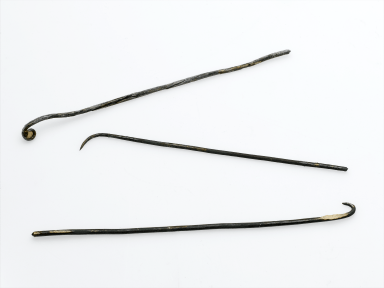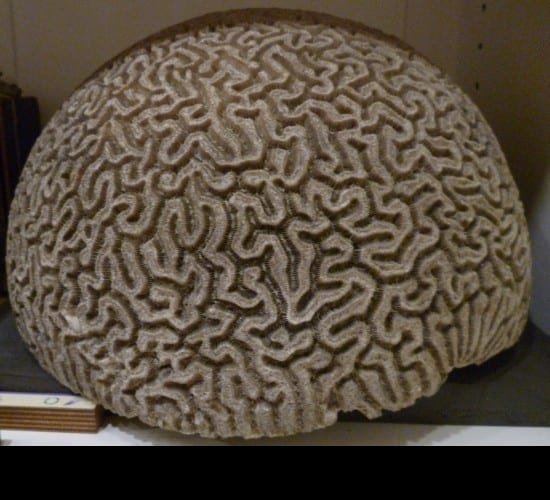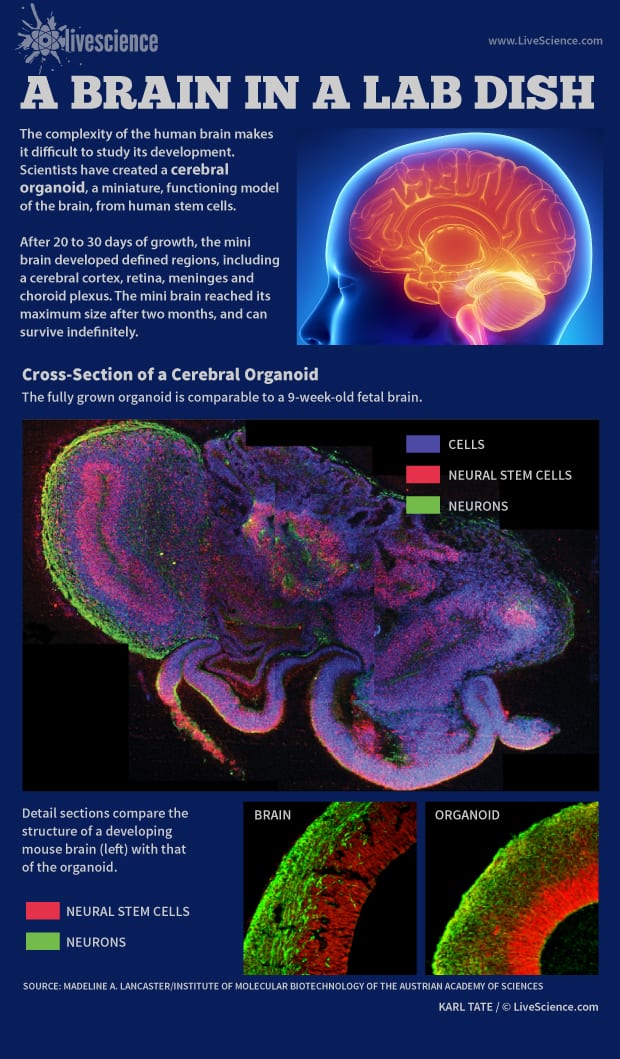Although humans are land mammals, we still occupy marine environments whether for work, leisure or exploration. But real sea mammals have adapted to living their entire lives in the ocean and the best adapted are whales and dolphins. Over time their adaptations have allowed them to live in a world with hardly any shelter where sound is more important than sight. Being smart and able to cooperate plays a vital role in surviving in this kind of environment.
One thing we have in common with whales and dolphins is that we have big brains. How big? Without taking into account body size, sperm whales have the biggest brain in the world weighing around 7.8 kg. But in proportion to body size, humans have a bigger brain followed closely by dolphins; strangely enough, whales have a smaller brain than most seals.

Delphinus sp
Common dolphin
Grant Museum Z2277
It would make sense to think that a larger brain has more neurons and therefore more cognitive power; but does brain size correlate with cognitive ability? Not necessarily—brain size does not tell us the whole story. The cortex is a thin layer of cells (2-4 mm) that constitutes the outermost layer of the brain and gives it its characteristic wrinkly appearance. The cortex is where all the higher cognitive functions take place, where our senses are processed and where consciousness, thought and language is formed. Because of this, we might assume that having a bigger cortex is the fundamental key to intelligence.
We know that dolphins and killer whales have a much wrinklier cortex than humans, meaning it has a bigger surface area. However, does a bigger cortex mean more neurons? Even though we don’t know the exact number of neurons killer whales or dolphins have, researchers have counted the total number of neurons in the neocortex (part of the cortex) of the minke whale. Although it has a similar thickness to the human cortex, it only has 2/3 of the neurons we have. Even at the cellular level, we don’t yet know what these differences mean. Overall a thick cortex does not necessarily mean more neurons and a big brain does not necessarily mean more cognitive power. Taking into account different parameters, it’s hard to tell which animal is smarter.
However, putting aside our brains, it’s what we can do with them that is interesting. Amongst whales, dolphins and humans, we all share behaviours that could be called culture. I say this carefully because the term culture can have different definitions and there is still debate on whether non-human animals can have culture in the way that we do. But let’s forget about humans—other animals have their own animal culture.
A general definition—taken from the book The cultural lives of whales and dolphins by Hal Whitehead and Luke Rendell—is as follows: “Culture is behaviour or information with two primary attributes: it is socially learned and it is shared within a social community”. In other words, culture is basically what you learn from other members of your community and it’s important to note that it’s not determined by your genes.
For instance, dolphins have sophisticated whistles and calls to communicate and some whales, additionally, have songs. They also have very specific ways of feeding depending on where they live and who they “hang out” with. The bottlenose dolphin, for example, has at least 20 different types of hunting. This does not mean that every bottlenose dolphin around the world knows 20 different types of hunting. This means, that depending on their social group and environment, they develop different skills. So one group of dolphins in the Caribbean might hunt a specific fish in a certain way while others in another part of the world do it differently. Even neighbour dolphins might hunt differently depending on who they form social bonds with. Similarly, whale songs can be in or out of fashion changing rapidly and spreading throughout the whole population of whales (grey whales in this case). All of these behaviours could be called culture because they are socially learned and are not determined by genes.
Moreover, why is culture so important? Genetic information is passed from one individual to another from one generation to the next. Communication of cultural information happens quicker than the flow of genetic information. Culture allows a population to learn something very quickly, and this, in turn, translates into better adaptations to new threats or new environments. Culture is what allows us, humans, to learn much more than what we could possibly deduce for ourselves.
Similar to humans, some would argue that whales and dolphins have culture because they have the ability to communicate information with individuals of their own community. Even if whale/dolphin intelligence or culture does not correlate entirely with our definitions of such, the whole idea of trying to fit them into a human definition is somewhat absurd. Animals adapt to their environment and so, will develop strategies to overcome the hurdles their unique habitat presents; thus if a whale cannot invent the wheel maybe it’s because it doesn’t need to.
In addition to big brains and cortices, humans share more with sea mammals than you might think. So next time you see a brain or a skull in the Grant Museum of Zoology or any other museum, think about how that brain has evolved to adapt to its particular environment.

Hyperoodon ampullatus Northern bottlenose whale Female Z1112
Sources:
Whitehead, H., & Rendell, L. (2014). The cultural lives of whales and dolphins. University of Chicago Press.
https://blogs.scientificamerican.com/news-blog/are-whales-smarter-than-we-are/

 Close
Close









